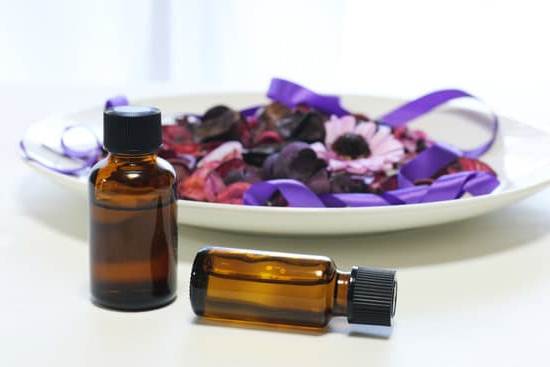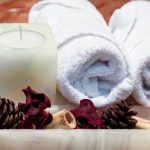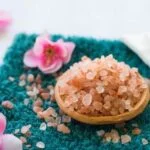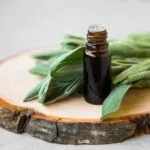Aromatherapy has gained popularity for its therapeutic benefits, and one of the key tools in this practice is an aromatherapy diffuser. So, how do you use an aromatherapy diffuser to experience the full effects of essential oils? Essentially, an aromatherapy diffuser is a device that disperses essential oils into the air, allowing you to inhale their aroma and reap their potential benefits.
The concept of aromatherapy revolves around using natural plant extracts in the form of essential oils to promote physical and psychological well-being. These aromatic compounds have been known to have various healing properties, from reducing stress and anxiety to improving sleep quality and boosting mood. Aromatherapy diffusers play a crucial role in releasing these essential oils into the air so that they can be easily inhaled.
There are different types of aromatherapy diffusers available in the market, each with its unique way of dispersing essential oils. From ultrasonic diffusers that use water to disperse oils through vibration, to nebulizing diffusers that break down oils into tiny particles for direct inhalation, choosing the right type of diffuser can enhance your aromatherapy experience. Understanding how to use these diffusers effectively is key to maximizing the benefits of aromatherapy in your daily life.
Benefits of Aromatherapy
Aromatherapy has been used for centuries as a natural way to promote health and well-being. By using essential oils derived from plants, aromatherapy can have a wide range of benefits for both the mind and body.
One of the main advantages of aromatherapy is its ability to help reduce stress and anxiety levels. Essential oils like lavender, chamomile, and ylang-ylang are known for their calming properties, which can help create a peaceful and relaxing atmosphere in your home or workspace.
In addition to providing stress relief, aromatherapy can also improve sleep quality. Essential oils like bergamot, cedarwood, and frankincense have sedative effects that can promote restful sleep patterns. Using an aromatherapy diffuser with these oils before bedtime can help you relax and unwind, leading to a more rejuvenating night’s sleep.
Furthermore, essential oils are known for their anti-inflammatory, antimicrobial, and pain-relieving properties. Oils such as tea tree, eucalyptus, and peppermint can help boost your immune system and relieve symptoms of colds or headaches when diffused in the air.
Another significant benefit of aromatherapy is its ability to enhance mood and improve mental clarity. Citrus oils like lemon, orange, and grapefruit have invigorating effects that can uplift your spirits and increase focus. By using an aromatherapy diffuser with these stimulating oils during work or study sessions, you can create a productive environment that promotes alertness and concentration. Overall, incorporating aromatherapy into your daily routine can have a positive impact on your physical health, emotional well-being, and cognitive function.
Types of Aromatherapy Diffusers
Aromatherapy diffusers come in various types, each with its unique way of dispersing essential oils into the air. Understanding the different types of diffusers available in the market can help you choose the one that best suits your needs and preferences. Here are some common types of aromatherapy diffusers:
- Ultrasonic Diffusers: These diffusers use water and ultrasonic vibrations to create a fine mist that disperses essential oils into the air. They are popular for their ability to also humidify the room, making them perfect for dry environments.
- Nebulizing Diffusers: Nebulizing diffusers do not require water or heat to disperse essential oils. Instead, they use pressurized air to break down the oil into tiny particles, releasing a potent aroma throughout the room.
- Heat Diffusers: As the name suggests, heat diffusers use heat to evaporate essential oils and disperse their fragrance. While they are simple to use, they may alter the chemical composition of some oils due to high temperatures.
- Evaporative Diffusers: These diffusers work by allowing essential oils to evaporate and disperse through the air naturally. They typically involve placing a few drops of oil on a pad or filter that then releases the aroma as it evaporates.
Knowing how each type of aromatherapy diffuser works can help you make an informed decision when looking to purchase one. Consider factors such as ease of use, maintenance requirements, and the type of experience you want to achieve with your essential oils.
When using an aromatherapy diffuser, it is essential to follow the manufacturer’s instructions for optimal performance and safety. Experimenting with different types of diffusers can help you determine which one works best for your needs and preferences. Whether you prefer a continuous mist throughout the day or intermittent bursts of fragrance, there is a type of aromatherapy diffuser out there for everyone.
Choosing the Right Essential Oils
A crucial aspect of using an aromatherapy diffuser effectively is selecting the appropriate essential oils for your needs and preferences. With a wide variety of essential oils available in the market, it can be overwhelming to choose the right ones. When determining which essential oils to use in your diffuser, consider the desired effects you want to achieve, whether it’s relaxation, stress relief, focus enhancement, or mood elevation.
To start, think about the scents that appeal to you personally. Some people are drawn to floral aromas like lavender or rose for their calming properties, while others prefer citrus scents such as lemon or bergamot for a refreshing and energizing effect. Experimenting with different essential oil combinations can help you discover what works best for you and provides the desired benefits.
It’s also essential to consider any potential sensitivities or allergies you may have before choosing essential oils for your aromatherapy diffuser. If you have sensitive skin or respiratory issues, opt for milder oils like chamomile or cedarwood. Always perform a patch test before using a new essential oil to ensure it doesn’t cause any adverse reactions. By taking these factors into account, you can create a personalized aromatherapy experience that suits your preferences and enhances your well-being.
| Essential Oil | Desired Effect |
|---|---|
| Lavender | Calming and relaxation |
| Peppermint | Focus enhancement and mental clarity |
| Lemon | Energizing and mood elevation |
Setting Up Your Diffuser
Aromatherapy diffusers are an excellent way to enjoy the benefits of essential oils in your everyday life. Setting up your diffuser correctly is crucial to ensure the proper dispersal of the essential oils and maximize their therapeutic effects. Here is a step-by-step guide on how to assemble and prepare your aromatherapy diffuser for use.
Step 1: Choose a Suitable Location
Before setting up your diffuser, select a suitable location for it. Make sure to place it on a flat and stable surface away from direct sunlight and heat sources. Also, ensure that there is enough space around the diffuser for proper ventilation.
Step 2: Fill the Water Tank
Most aromatherapy diffusers have a water tank where you will add water along with a few drops of your chosen essential oil. Be sure to read the manufacturer’s instructions on the recommended water level and amount of essential oil to use. Avoid overfilling the tank, as this can prevent the mist from properly dispersing.
Step 3: Assemble the Diffuser
Once you have filled the water tank with water and essential oil, carefully assemble all parts of the diffuser according to the manufacturer’s instructions. This usually involves attaching any necessary pieces, such as lids or covers, securely to ensure proper functioning.
By following these steps, you can easily set up your aromatherapy diffuser and start enjoying the wonderful benefits of essential oils in your home or workplace. Remember to clean your diffuser regularly to maintain its efficiency and longevity, allowing you to continue benefiting from aromatherapy for years to come.
Using an Aromatherapy Diffuser Safely
Aromatherapy diffusers are popular for their ability to disperse essential oils into the air, creating a soothing and therapeutic ambiance. However, it is essential to use these devices safely to avoid any potential hazards and maximize the benefits of aromatherapy. Here are some important safety precautions to ensure a safe and effective aromatherapy experience.
Firstly, it is crucial to follow the manufacturer’s instructions when using an aromatherapy diffuser. Each diffuser may have specific guidelines for operation, cleaning, and maintenance that should be strictly adhered to. Additionally, make sure to place the diffuser on a stable surface and away from any flammable materials or direct heat sources.
Another important safety consideration is the type of essential oils used in the diffuser. Not all essential oils are suitable for use in every type of diffuser, so it is important to research which oils are compatible with your specific device. Always dilute essential oils as directed before adding them to the diffuser to prevent skin irritation or allergic reactions.
Furthermore, never leave an aromatherapy diffuser unattended while in use. It is recommended to set a timer for your diffuser based on its operational guidelines and avoid continuous diffusion for extended periods. If you have pets or young children at home, ensure that the diffuser is placed in a location inaccessible to them to prevent accidental spills or ingestion of essential oils.
| Safety Precautions | Importance |
|---|---|
| Following manufacturer’s instructions | Ensure proper operation and maintenance |
| Using compatible essential oils | Prevent skin irritation or allergic reactions |
| Avoiding unattended use | Prevent accidents or spills |
Tips and Tricks for Aromatherapy Diffuser Beginners
For beginners venturing into the world of aromatherapy, using an aromatherapy diffuser may seem like a daunting task at first. However, with some handy tips and tricks, you can easily maximize the effectiveness of your diffuser and enhance your overall experience with essential oils. Here are some useful suggestions for first-time users on how to make the most out of their aromatherapy diffuser:
- Start by choosing the right essential oil: Before using your aromatherapy diffuser, it is essential to select the appropriate essential oil based on your desired effects and personal preferences. Whether you are looking to relax, boost focus, or alleviate stress, there is a wide range of essential oils available that cater to different needs.
- Follow the manufacturer’s instructions: Different types of aromatherapy diffusers have specific instructions for optimal use. Whether you have an ultrasonic, nebulizing, heat, or evaporative diffuser, it is crucial to read and follow the manufacturer’s guidelines on how to operate your device effectively.
- Experiment with different diffusion settings: Most aromatherapy diffusers come with multiple settings for intensity and duration of diffusion. Take the time to experiment with these settings to find what works best for you. Some people prefer a continuous low mist throughout the day, while others may opt for intermittent bursts of scent.
As a beginner using an aromatherapy diffuser, it is also important to set up your device properly before each use. Make sure to place it on a stable surface away from direct sunlight and drafts to ensure even dispersion of the essential oils in the air. Additionally, regular cleaning and maintenance of your diffuser will not only prolong its lifespan but also prevent any build-up that could affect its performance.
By following these tips and tricks for beginners, you can navigate the world of aromatherapy with confidence and make the most out of your essential oils and diffuser. Remember that practice makes perfect when it comes to using an aromatherapy diffuser, so don’t be afraid to experiment and discover what works best for you in creating a relaxing and soothing atmosphere in your home or workspace.
Maintenance and Cleaning of Aromatherapy Diffusers
In conclusion, incorporating aromatherapy into your daily routine can have numerous benefits for both your physical and mental well-being. By using an aromatherapy diffuser, you can easily enjoy the therapeutic effects of essential oils in your home or workspace. Understanding how to use an aromatherapy diffuser correctly is crucial in maximizing its effectiveness and ensuring a safe experience.
To maintain the longevity of your aromatherapy diffuser, it is essential to follow the care instructions provided by the manufacturer. Regularly cleaning your diffuser will not only help prevent oil buildup and blockages but also ensure that it continues to function optimally. By taking the time to properly maintain your diffuser, you can enjoy its benefits for a long time to come.
In addition to maintenance and cleaning, it is important to use high-quality essential oils in your aromatherapy diffuser for best results. Whether you are looking to relax, boost your mood, or improve focus and concentration, choosing the right essential oils based on their properties and aroma can enhance your overall experience. With proper care and attention, you can make the most out of your aromatherapy diffuser and create a calming and inviting atmosphere in any space.
Frequently Asked Questions
How Many Drops of Essential Oil Do You Put in a Diffuser?
When using a diffuser, the number of drops of essential oil you put in depends on the size and capacity of the diffuser. Typically, it is recommended to use about 5-10 drops for smaller diffusers and up to 15-20 drops for larger ones.
Do You Have to Put Oil in a Diffuser?
You do not necessarily have to put oil in a diffuser, but it is a crucial component of the diffusing process. The essential oils are what create the aromatic experience and provide various therapeutic benefits when dispersed into the air through the diffuser.
What Oil Do You Use in a Diffuser?
The type of oil you can use in a diffuser primarily depends on personal preferences and desired effects. Common choices include lavender for relaxation, eucalyptus for respiratory support, peppermint for energy boost, or citrus oils for mood enhancement. It is important to use pure essential oils specifically formulated for aromatherapy purposes.

Are you looking for a natural way to improve your health and wellbeing?
If so, aromatherapy may be the answer for you.





